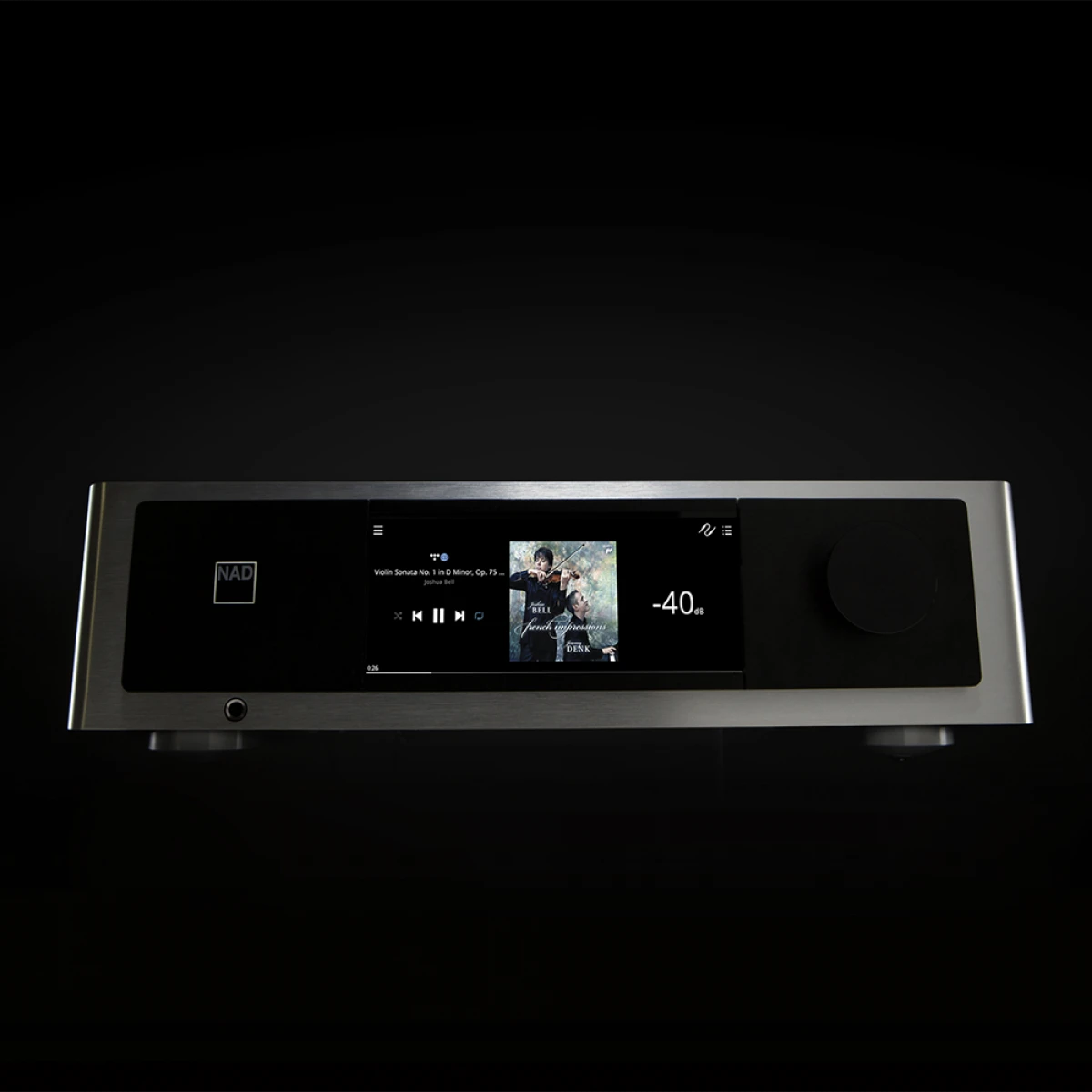Preamplifiers — NAD C 658
Description, images, technical data and specifications
NAD C 658
Image source — © NAD
The NAD C 658 is BluOS Enabled, which means it boasts the most sophisticated high-definition streaming system. BluOS natively supports almost 20 streaming music services and indexes more than 250,000 tracks from local network sources.
Specifications
Model name
C 658
Analog inputs (balanced)
N/A
Analog inputs (single-ended)
2 + 1 (Phono)
Analog outputs (balanced)
1
Analog outputs (single-ended)
1
Gain (dBu)
N/A
Input sensitivity (mV)
93
Output voltage (V)
4.5
Input impedance (balanced) (Ω)
N/A
Input impedance (single-ended) (Ω)
22 000
Output impedance (balanced) (Ω)
240
Output impedance (single-ended) (Ω)
240
Maximum output level (balanced) (dBu)
N/A
Maximum output level (single-ended) (dBu)
N/A
Volume control range (dBu)
N/A
Frequency response low +/- 3dB (Hz)
20
Frequency response high +/- 3dB (Hz)
20 000
Signal to Noise Ratio (SNR, unweighted) (dB)
>106
Total Harmonic Distortion + Noise (THD+N) (%)
<0.005
Dimensions (mm)
435 x 100 x 405
Weight (kg)
10.1
Official link



